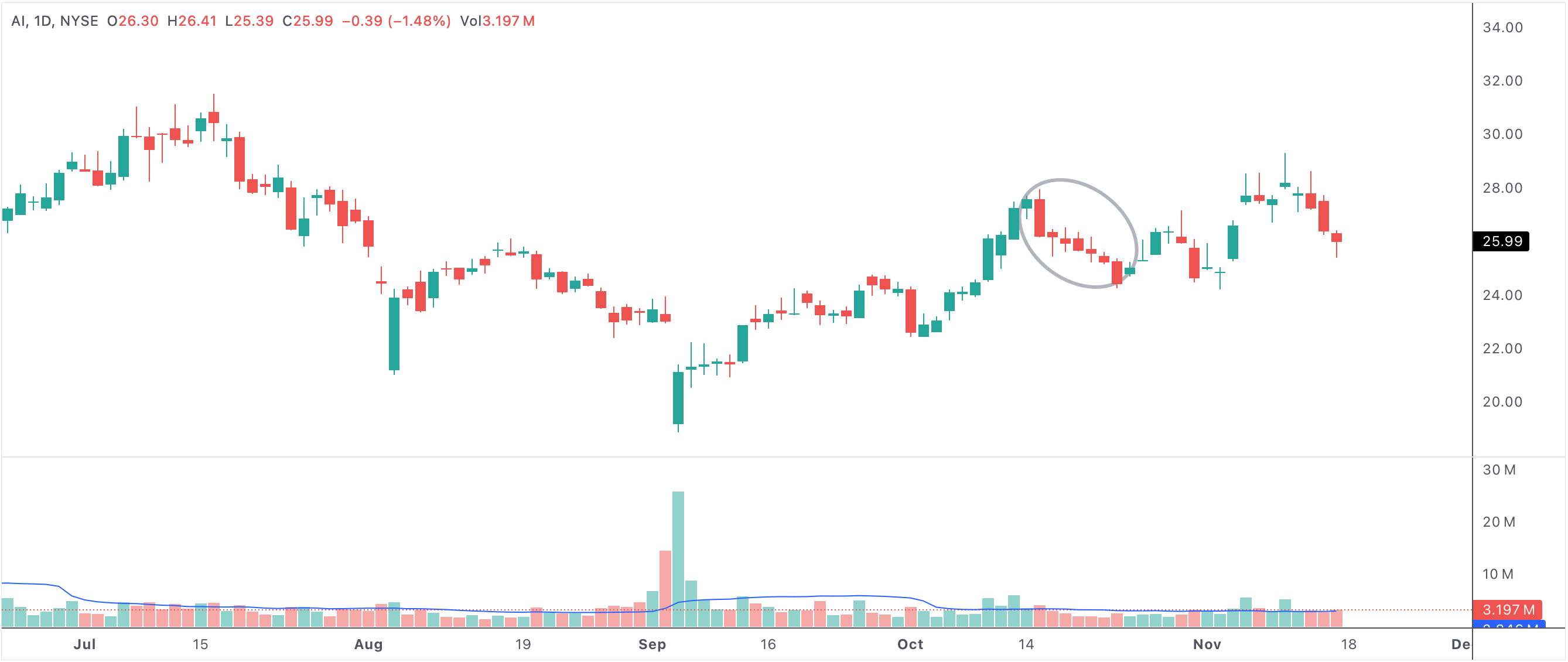Longest consecutive down days in stocks - signals, reversals, and strategy
The appearance of longest consecutive down days in a stock or index is often a striking signal for traders and investors. Consecutive down days refer to a period when an asset closes lower for several sessions in a row, pointing to persistent selling pressure and a strong bearish trend. Such losing streaks can shape short-term sentiment and may even influence broader market psychology, as extended declines usually spark concerns about momentum, underlying fundamentals, and overall investor confidence.

downdays
An example of a stock with extended consecutive down days
Stocks with extended consecutive down days
Understanding Consecutive Down Days and Bearish Sentiment
When a stock or sector experiences several down days in a row, it typically reflects strong negative sentiment. Factors such as disappointing earnings, negative news flow, sector rotation, or broader economic concerns can all contribute. For technical analysts, a string of losses is a classic sign of increased selling momentum, often driven by short-term traders, stop-loss triggers, or institutional liquidations.
Persistent down days can sometimes lead to panic selling, especially if losses extend beyond what is considered normal volatility for the asset. As these streaks grow longer, they attract more attention from both traders looking for potential short setups and contrarians watching for possible rebound opportunities.
Oversold Conditions and Signals for a Potential Reversal
While consecutive down days are a clear marker of a bearish environment, extreme streaks can also lead to deeply oversold technical conditions. Indicators such as the Relative Strength Index (RSI), stochastic oscillator, and moving averages can confirm when a stock or index is trading far below its recent range. Oversold readings suggest that selling may have become overdone, with prices potentially detached from fundamental value.
In these scenarios, savvy investors and traders start to look for signs of a bottom. A strong reversal day with high volume, bullish divergence on momentum indicators, or the appearance of a support zone can all signal that the downtrend is losing steam and that a turnaround may be near. Many successful trades are built around identifying these inflection points, where the market sentiment pivots from fear to optimism.
Technical Patterns and Market Psychology
The psychology behind consecutive down days is important. Each new loss tests the resolve of existing shareholders, while emboldening short sellers and discouraging new buyers. Eventually, as prices become more attractive, value investors and bargain hunters may step in, especially if the decline seems disconnected from the company's long-term prospects. When enough buying interest emerges, a classic short-covering rally or “dead cat bounce” can unfold, sometimes leading to a more sustained bullish reversal.
- Momentum traders may look to ride the trend lower until a technical signal emerges.
- Contrarian traders look for exhaustion in selling volume and early signs of accumulation.
- Technical analysts watch for support levels and positive divergences in indicators.
- Long streaks of down days can often precede some of the strongest rebounds, especially in oversold markets.
- However, it’s important to confirm a reversal before entering, as trends can persist longer than expected.
Risk Management and Trading Strategy
For traders, navigating the longest consecutive down days requires discipline and risk control. Chasing a stock lower can be dangerous if a sudden reversal occurs, while trying to catch a falling knife without confirmation of a bottom can lead to further losses. Using stop-loss orders, watching for technical signals of capitulation, and gradually scaling into positions are common tactics for mitigating risk.
From a longer-term perspective, a cluster of consecutive down days can sometimes offer a rare opportunity to buy quality stocks at a discount. However, patience is crucial, as successful reversals often require confirmation—such as a powerful up day, volume spike, or positive news catalyst.
Summary: Consecutive Down Days as Both Warning and Opportunity
In summary, the longest consecutive down days serve as a strong signal of bearish market conditions, driven by persistent selling and negative sentiment. However, extreme streaks can also create oversold opportunities, setting the stage for a potential bullish reversal if market psychology shifts and value buyers return. Careful analysis, confirmation of a trend change, and disciplined risk management are all essential to turning these challenging periods into profitable opportunities.